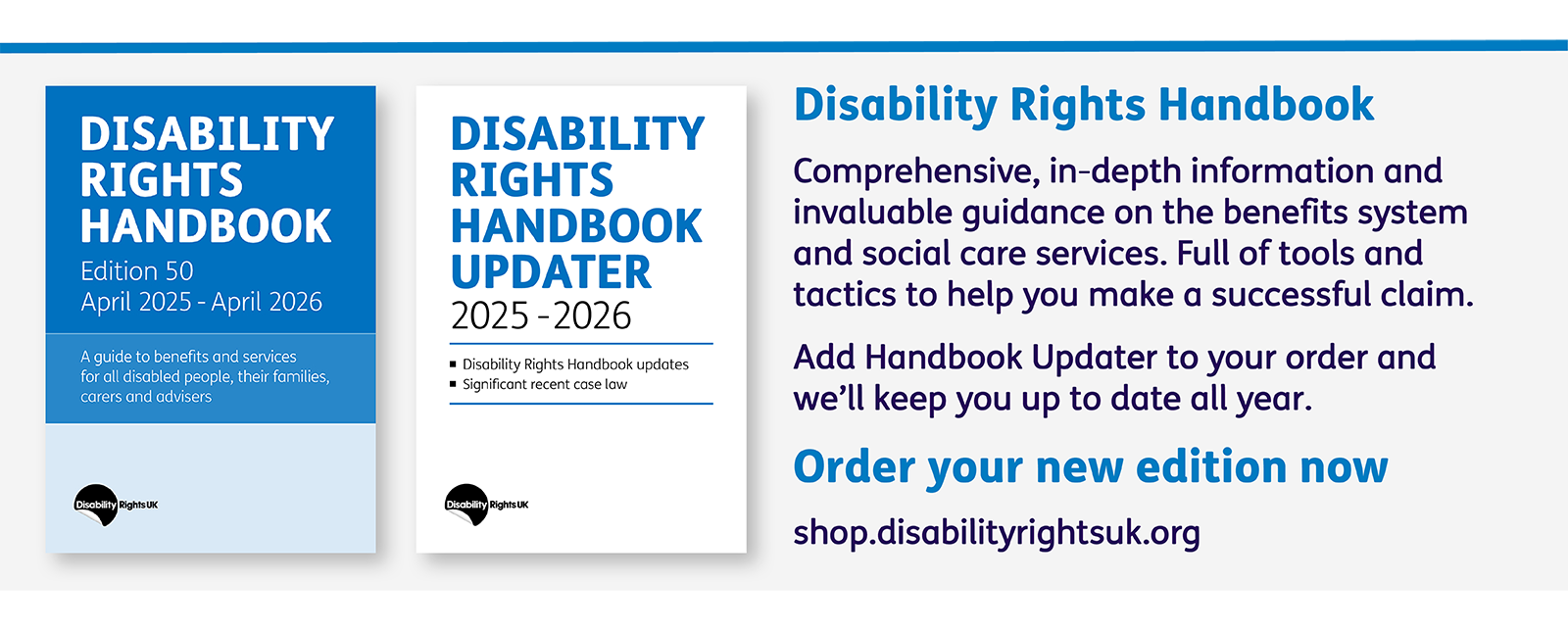The Disability Rights Handbook: A Brief History
THE EARLY YEARS
The Disability Rights Handbook began its life as pamphlet produced by the new campaigning organisation Disability Alliance. Disability Alliance was set up in response to the Thalidomide scandal. Peter Townsend was one of the co-founders; having already co-founded the Child Poverty Action Group (CPAG).
The first edition of the Handbook was published in the mid-seventies. It was less than 40 pages long. It was produced in response to the lack of information on disability rights in general, and the state benefits available for Disabled people in particular. The Handbook was written for Disabled people; it is still written in the second person.
At that time it was extremely difficult to get any information from the Department of Health and Social Security (DHSS). Leaflets promoting benefits were non-existent. Many of the benefits were discretionary, rather than statutory – and few decisions were being challenged. You had Supplementary Benefits with Discretionary Additions and Exceptional Needs Payments, all shrouded in the mists of secrecy.
Amongst other campaigning organisations, Claimants Unions used direct action to force the decision making process out into the open, where decisions could be challenged and authorities held to account.
Peter Townsend edited the first edition of the Handbook. Other guides first saw the light of day at that time, including the CPAG Welfare Benefits Handbook. The Handbook, initially just planned as a one off, was considerably wider ranging than our current version. It had chapters which were more discursive in nature, including one on sex and disability. The focus, however, was on the state benefits available to Disabled people – a focus we have maintained to this day.
DEVELOPMENT
The first copy of the Handbook proved very popular, so two versions were published the following year. A version in Japanese was published; oddly the only language that it has ever been translated into. As it settled into a regular annual edition, the Handbook grew in heft, partly reflecting the growing complexity of the benefits system.
At first, the Handbook was written in the spare time of the various advice workers and volunteers at Disability Alliance, but it soon became clear that a full-time editor was required. Sally Robertson took on this role, and remained as editor until the 18th edition, by which time the Handbook was over 100 pages long, and was recognisable in comparison to the current version.
The writing in those days was done on typewriters. The law came in bound volumes, updated by the insertion of individual sheets. Case law was rarely published. Searches were done in dusty files and drawers, not on computers. New text was inserted into old copy by actual cutting and pasting of typed documents; to be sent to typesetters. Some sheets remain to this day, the glue having turned the sheets yellow with age.
The 19th edition was taken over by a new editor, my predecessor, Judith Paterson, who held the post up to the 26th edition. In her years the Handbook grew to 288 pages. Under Judith a production editor and copy editor were taken on, and computers reduced the amount of glue being used.
Under both editors, a growing team of authors was taken on to focus on different areas, including Industrial Injuries benefits, the War Pensions scheme and the complex net of support for those in residential and nursing homes. Even more complex was the intersection of benefits and immigration, as respective governments tightened up the rules in response to tabloid headlines.
TODAY AND THE FUTURE
I have been editor now for 20 editions. In my time benefits have been introduced, reformed and abolished, and the system is more complex than ever. I have seen the introduction of the Equality Act, Pension Credit, Employment and Support Allowance, the Work Capability Assessment, Personal Independence Payment and Universal Credit. The sanctions regime has been ramped up. The Care Act has come and, in part, gone.
My work is very different from that of Sally Robertson. There is so much more case-law now, but it is available at the touch of a button. I can delve into the regulations from my Leith Flat, without needing to wade through stacks of ill-sorted paperwork.
An online edition of the Handbook was first published last year. The Handbook is more alive now as a consequence, changing from month to month, as the law changes. It now means that at any one time I am working on two Handbooks: the current one and the next one.
One thing that has not changed is that there is a still a direct link between poverty and disability, as found by Peter Townsend all those decades ago. With the recent benefit cuts and the cost of living crisis, the poverty is getting worse. The demand for advice on rights is increasing, but those services providing advice are being cut by those same economic forces.

